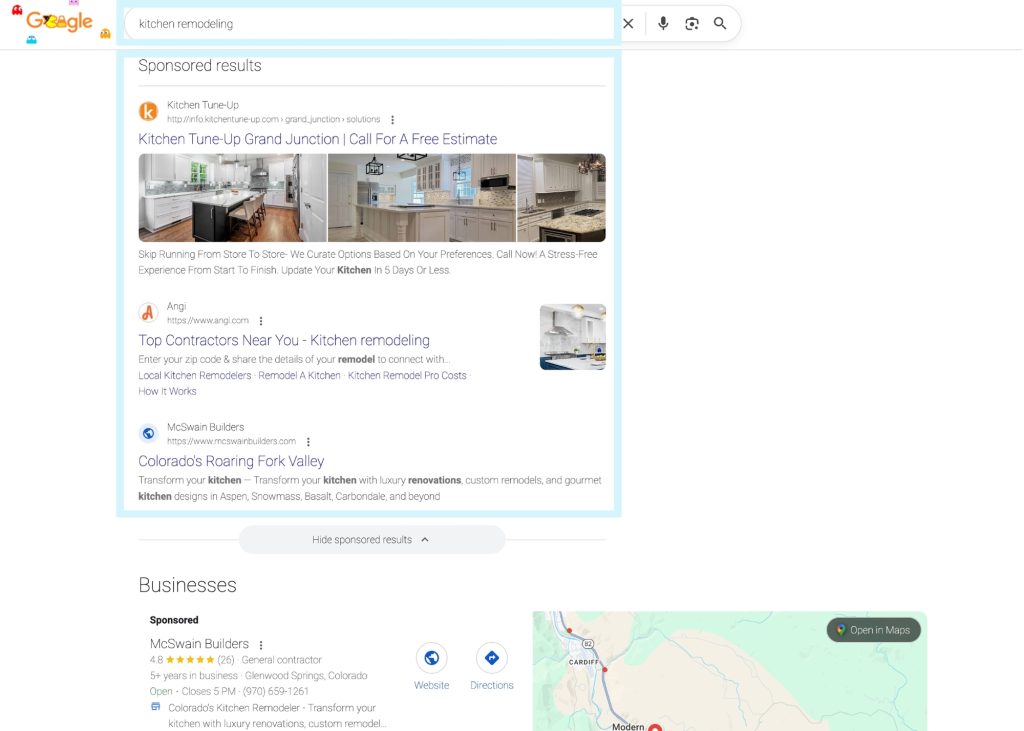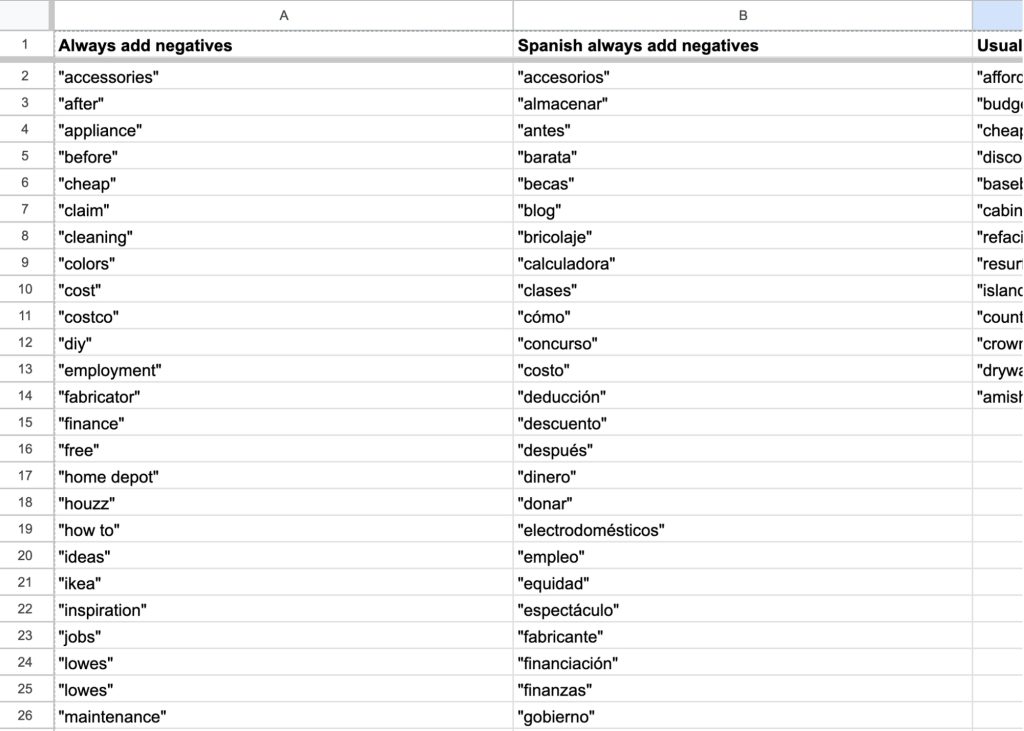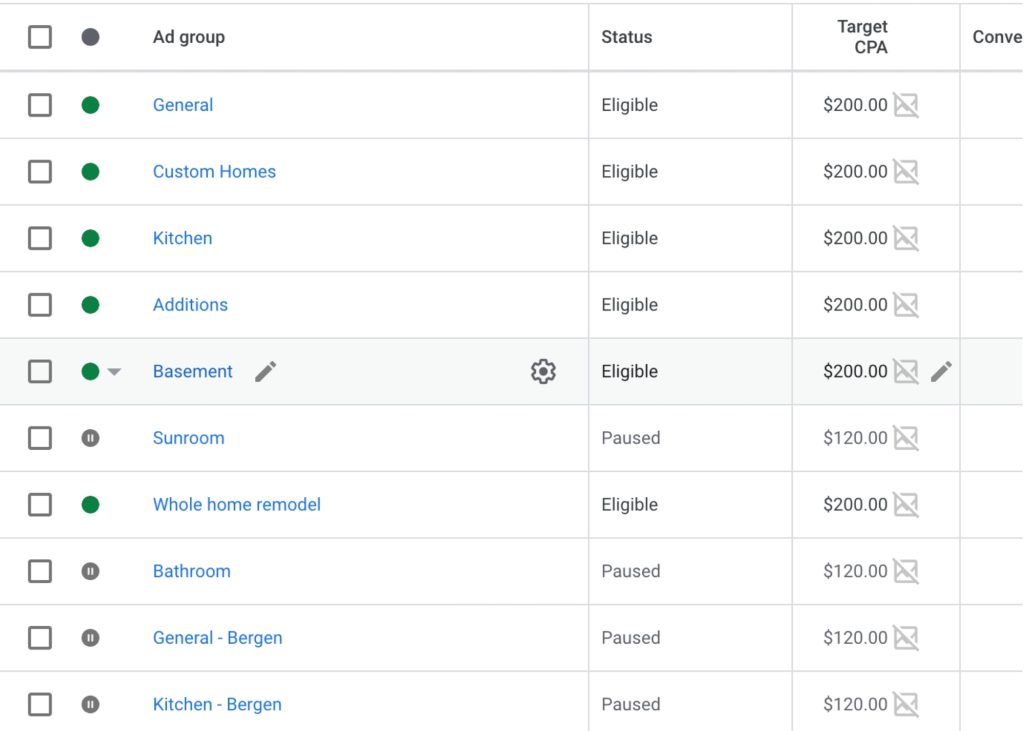When contractors start exploring paid ads, the first question is usually where to spend money. Should you invest in Google Ads for construction, test Local Service Ads (LSAs), or try Meta ads for construction leads? The answer depends on your services, budget, and goals — but the order of operations is clear. Capture bottom-of-funnel demand first, then test higher-funnel strategies once you’re seeing consistent results.
Why Paid Ads for Contractors Start Bottom-of-Funnel
If you have a limited budget, bottom-of-funnel search ads are where you’ll see the fastest return. These are the prospects actively searching for “kitchen remodel contractor near me” or “luxury home builder in Denver.” They have intent, which means they’re ready to talk.
We recommend setting a minimum of $1,000 per month for Google Ads for contractors. Anything less makes it difficult to gather enough data to optimize. If your ad spend is between $1,000–$3,000, focus entirely on Google PPC search campaigns. Once you’re above $4,000 per month, you can consider layering in LSAs or Meta.

The $1,000 Per Month Learning-Period Playbook
During the first 30–60 days with a smaller budget, your goal is to figure out which ad groups are working and which are wasting money. For example, if you’re running a remodeling campaign with ad groups for kitchens, bathrooms, and ADUs, you may discover the ADU ad group drives more clicks and has a lower cost per lead, while the bathroom group burns budget. The play is to shut off the underperforming groups and reallocate toward the ad groups that deliver real leads.
This is where negative keywords also matter. At a minimum, we always add terms like:
- Ikea, Lowe’s, and other store names
- DIY and inspiration-related searches
- Jobs, subcontractors, or “work”
These cut out people looking for furniture, inspiration photos, or employment instead of a contractor.
At Nover Marketing, we have a master negative keyword list that our team uses to launch an account. This includes “always add” negatives, Spanish specific “always add” negatives, and usual exclusions that need to be checked based on a client’s service offerings. For example, we usually add “resurfacing” as a negative keyword for cabinet makers, unless a client specifically offers resurfacing services.

Google Search Setup Highlights That Prevent Waste
There are a few musts when setting up Google Ads for construction companies:
- Separate ad groups by service type (kitchens, decks, ADUs, etc.)
- Turn off search partners and the Display Network for more control
- Track conversions properly (only count form fills or calls, not page views)
- Protect against spam and bot traffic with tools like CleanTalk or Cheq
This structure prevents wasted budget and ensures you know exactly which services are driving leads.

Where Local Service Ads Fit — and Where They Don’t
Local Service Ads for contractors can work, but they aren’t right for every service.
One success story: a general contractor who also took deck jobs. We put them in the decking category with an artificially inflated LSA budget while running Google Ads at $750/month. Because LSA refunds for irrelevant leads, we kept them within the $1,000 total budget and generated consistent deck leads.
One mismatch: an ADU builder. LSA doesn’t have an ADU-specific category. The closest was “accessory buildings,” which included sheds. The builder wasted money on irrelevant leads. In this case, LSA just wasn’t specific enough, so we shut it off.
When to Test Meta Ads for Contractors
Meta (Facebook and Instagram) ads can generate construction leads at a lower cost, but they’re usually higher in the funnel. We consider Meta when:
- The contractor needs a quick influx of volume (bathrooms, decks, lawn care).
- The services are smaller-ticket items where consumers are willing to transact faster.
Meta is less effective for high-end, full-gut remodels or custom homes because people don’t hire for those projects after seeing a social ad.
What Meta Creative Wins in Construction Marketing?
- Video first: Video almost always outperforms static ads.
- Face on camera: Opening with a person speaking feels organic and increases watch time.
- Strong hooks: Visual movement, a verbal hook, and an on-screen text hook in the first few seconds.
- Carousel and static ads: Keep variety in your creative mix, but prioritize video.
The ADU Builder $1M Year-One Case Study
A client building ADUs in Colorado went from zero presence to fully booked in year one with $1M in revenue. The strategy combined Google PPC ads targeting ADU-specific searches, plus a content-heavy SEO push that ranked them for 100+ first-page keywords. This balance of quick-win ads and long-term organic positioned them as the go-to ADU builder in their market.
How to Decide Ad Budget Splits by Stage
- $1K–$3K per month: Google PPC only
- $4K–$7K per month: 70% PPC Search, 30% Meta
- $7K+ per month: Layer in LSAs where category fit exists
This staged approach prevents waste and ensures each new investment builds on proven ROI.
Closing: Ready to Build a Paid Ads Plan That Works?
Whether you’re a remodeler needing leads now, or a custom builder who wants to dominate search results, a well-structured paid ads strategy is the foundation for growth. At Nover Marketing, we specialize in paid ads for contractors, with experience running Google Ads, LSAs, and Meta campaigns tailored to the construction industry. Book a free consultation today, and let’s create an ad plan that fills your pipeline with the right projects.